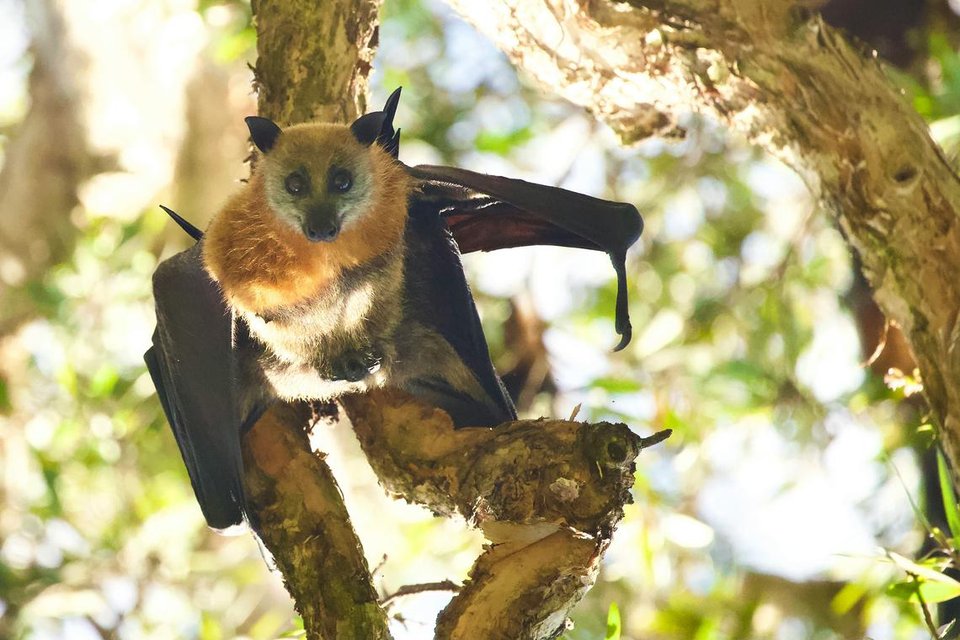Health
Australian Man Dies From Rare Bat Bite

A man in his 50s has died in New South Wales after contracting Australian bat lyssavirus (ABLV) a rare and incurable rabies-like infection that has only been recorded three times before in humans. All previous cases were fatal.
The unidentified man was bitten by a bat several months ago and had initially received medical attention, according to a statement from NSW Health.
He had recently been listed in “critical condition” before his death was confirmed on July 3.
“We express our sincere condolences to the man’s family and friends for their tragic loss,” NSW Health said, confirming the cause as ABLV.
A Silent, Fatal Infection
The virus, which closely resembles rabies, enters the human body through bat saliva, typically via a bite or scratch.
Symptoms may not appear for weeks or even years but once they do, the outcome is almost always fatal without urgent treatment.
Early symptoms mimic the flu: fever, fatigue, headache. But the disease can quickly escalate, leading to paralysis, convulsions, delirium, coma, and death.
“Australian bat lyssavirus is very closely related to rabies and will cause death in susceptible people if they become infected and are not treated quickly,” said Professor James Gilkerson, infectious disease expert at the University of Melbourne.
No Effective Treatment Once Symptoms Begin
ABLV was first discovered in May 1996 when scientists at Australia’s national science agency, CSIRO, examined a flying fox that had shown “nervous signs.”
The first known human fatality came later that year when a bat handler in Queensland died om the virus.
A second fatality occurred in 1998, and an eight-year-old boy died in 2013—also in Queensland.
With this latest death, the human toll now stands at four, and all confirmed cases have resulted in death.
NSW Health reiterated the importance of avoiding any direct contact with bats.
“Any bat in Australia could carry lyssavirus,” the department said, warning that only trained, vaccinated wildlife handlers should interact with bats.
How to Respond to a Bat Bite or Scratch
Authorities say immediate action can save lives. If bitten or scratched by a bat:
1. Wash the wound thoroughly for at least 15 minutes with soap and water.
2. Apply an antiseptic with anti-viral properties.
3. Seek medical attention immediately to receive rabies immunoglobulin and a course of rabies vaccines.
“Quick post-exposure treatment is the only proven defense,” NSW Health stated.
Species Involved Still Unknown
The species of bat responsible for the latest infection has not yet been identified. ABLV has previously been found in both flying foxes and insect-eating microbats across Australia.
Infected bats can transmit the virus to humans, other bats, and even other mammals.
Despite its rarity, health experts are urging the public not to become complacent.
A Rare Threat With Global Echoes
While rabies does not exist in wild animal populations in Australia, ABLV serves as a stark reminder of the dangers posed by zoonotic diseases those that jump from animals to humans.
“Even though this virus is extremely rare, the consequences are devastating if early treatment isn’t administered,” Professor Gilkerson said.
The death has prompted renewed calls for public education, improved wildlife handling protocols, and greater awareness of the risks posed by even brief bat encounters.
For Diaspora Digital Media Updates click on Whatsapp, or Telegram. For eyewitness accounts/ reports/ articles, write to: citizenreports@diasporadigitalmedia.com. Follow us on X (Fomerly Twitter) or Facebook












